The method of growing tomatoes in buckets without a bottom appeared at the end of the 20th century. Then they forgot about it and revived not so long ago, about ten years ago. This option has its pros and cons. The advantages include saving space for cultivation, reducing the growing season and the lack of need for weeding. But, not all tomato varieties are suitable for this method of growing. You should carefully consider the choice of buckets.
Content
The advantages of the method
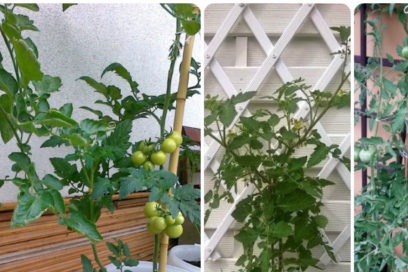 Growing tomatoes in buckets has advantages:
Growing tomatoes in buckets has advantages:
- This method allows you to grow tomatoes in any household plot. No need to look for a place under the beds or greenhouses.
- Earth in buckets warms up faster than in beds. Seedlings can be planted three weeks earlier. Bushes begin to bear fruit ahead of schedule.
- Weeds do not grow in soil placed in containers.
- Tomatoes sitting in buckets are practically not susceptible to disease.
- Plants in buckets can be moved, hidden from the hail, or tucked away in the shade.
- Bushes in separate containers are distinguished by active development. The root system becomes powerful, the stems thicken, and the fruits gain more sugar.
This method has one drawback. The soil used in buckets is suitable for one season. It must be completely replaced before the next landing.
What you need for landing
Tomatoes in any capacity will not grow on their own. They need to create conditions close to garden ones, but arrange them to a lesser extent.
To plant tomatoes in buckets, you will need to prepare the following:
- Capacities.
- Priming.
- Humus.
- Drainage (small gravel, expanded clay, broken brick).
- Top dressing: humus, hay, grass, eggshell, etc.
Suitable varieties
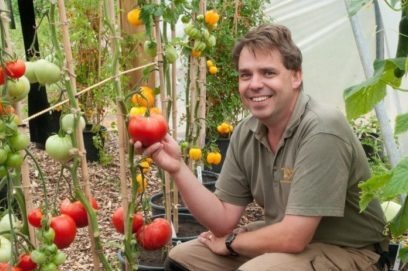 Buckets grow any kind of tomato. But, if tomatoes grow in the open air, experienced gardeners recommend giving preference to undersized varieties. A good harvest in buckets give cherry.
Buckets grow any kind of tomato. But, if tomatoes grow in the open air, experienced gardeners recommend giving preference to undersized varieties. A good harvest in buckets give cherry.
In greenhouses, tall indeterminate plants can be grown. These include the following varieties of tomatoes:
- Miracle of the earth;
- Giant Novikov;
- Yantarevsky;
- Egyptian giant.
Which buckets are suitable and their preparation
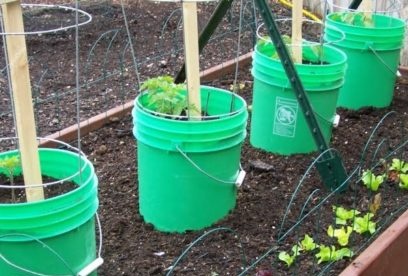 Tomatoes can be grown in any container with a leaky bottom of at least 10 liters. Such an area will allow the roots to grow and nourish the plant freely.
Tomatoes can be grown in any container with a leaky bottom of at least 10 liters. Such an area will allow the roots to grow and nourish the plant freely.
Containers resembling buckets in shape and size can be purchased at a flower shop (planter) or use what is at hand:
- plastic from bulk food products;
- wooden tubs;
- household buckets for food waste.
Tomatoes do not care what capacity to sit in, however, it is worth avoiding black buckets so that the root system of the plant does not overheat on hot, sunny days. If the bucket is black, you can wrap it with a white opaque cloth or burlap.
Plastic and wooden containers have one significant drawback. They burst from temperature changes and do not live longer than two seasons. Iron containers live longer.
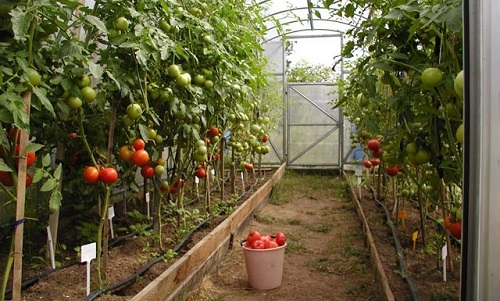 You may be interested in:
You may be interested in:Buckets in which tomatoes will grow, it is advisable to take new or from food products. If the containers used to have paint or cement mixture, they need to be prepared: rinse and leave to ventilate.
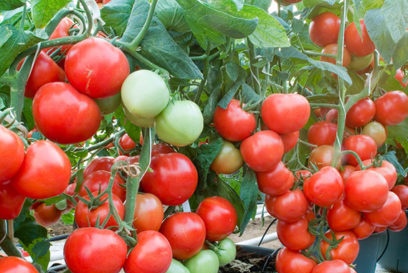
The end of October is the right time to prepare buckets for spring planting of tomato seedlings.
Build buckets for tomatoes like this:
- Cleaned, washed containers.
- Several holes are made in the bottom for outflow of water.
- At the bottom, a layer of 2-3 centimeters is covered with drainage. It can be small stones, expanded clay, broken brick.
- Soil is poured onto the drainage.
- The soil is loosened and spilled with warm water.
In this form, buckets will stand until spring. It is better to leave them in the greenhouse and, if possible, regularly fall asleep with snow.
Soil preparation
Not only soil is poured into buckets, but a soil mixture. It must be nutritious and provide the plant with all the necessary substances. If it is not possible to independently prepare nutritious soil, you can use the purchased one and additionally enrich it with micro and macro elements.
The soil mixture for tomatoes in buckets includes the following components:
- turf land;
- peat or humus;
- wood ash;
- hay, weeds and the remains of plant foods in the form of humus;
- mineral fertilizers (urea, superphosphate, potassium chloride, manganese).
To obtain the soil, you need to take equal proportions of all components, mix and spill with a bright pink manganese solution. The solution will require 1 g of potassium permanganate per 10 liters of water.
The principle of planting tomatoes
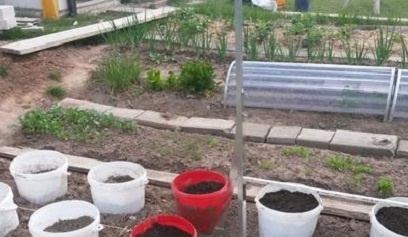 For warming the soil in buckets, less time is required than for a larger volume in greenhouses and in beds. Planting tomatoes in separate containers can begin in May, when the night temperature does not drop below zero.
For warming the soil in buckets, less time is required than for a larger volume in greenhouses and in beds. Planting tomatoes in separate containers can begin in May, when the night temperature does not drop below zero.
There is an opinion that containers with bushes should be buried in the ground, deepening it by twenty-five to thirty centimeters. However, if the root system grows through the holes into the ground, moving the bucket will not work.
Seedlings are planted in buckets according to the same principle as in a greenhouse or in open ground:
- make a deepening (about 15 centimeters), a growth stimulator is added to it (optional);
- seedlings are lowered into the recess and covered with soil along the root neck (to the lower leaves);
- tamp the soil and watered with warm water.
The method of growing in buckets does not provide for transplanting and planting plants, so it is recommended to plant one tomato seedling in one bucket.
Plant care
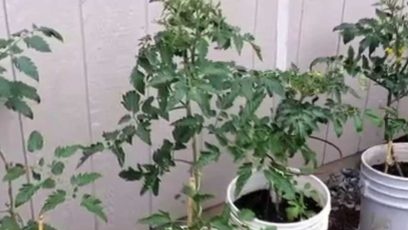 Tomatoes growing in buckets do not differ from their counterparts sitting in the beds or in greenhouses, so the care will be the same. A big plus of growing plants in separate containers is that they can be moved away from direct sunlight or heavy rain, such as hail.
Tomatoes growing in buckets do not differ from their counterparts sitting in the beds or in greenhouses, so the care will be the same. A big plus of growing plants in separate containers is that they can be moved away from direct sunlight or heavy rain, such as hail.
In order for the tomatoes to yield a good harvest, one should do the following:
- water bushes abundantly with warm water;
- loosen the soil so that oxygen enters the roots;
- carry out stepsoning;
- feed plants.
Bushes of tomatoes sitting in containers require three top dressings. They are made under the root in this order:
- The first top dressing ten days after transplanting seedlings. It consists of water (10 liters), liquid mullein (0.5 liters) and nitrophosphate (1 tablespoon).
- The second 10-12 days after the first. It consists of water (10 liters), potassium sulfate (1 tsp), complex fertilizer (1 tbsp).
- The third in 14-16 days from the second. It consists of water (10 liters), wood ash (2 tablespoons), superphosphate (1 tablespoons).
Tomatoes in buckets do not spud. If the capacity of the tank allows, this can be partially done.
 You may be interested in:
You may be interested in:Tomatoes growing in separate containers almost do not get sick. If you suspect a disease of late blight, when brown spots appear on the leaves and fruits, they do this:
- fed with fertilizers containing potassium and phosphorus;
- treated with Bordeaux liquid;
- after a week, pour a solution of water (10 l), potassium permanganate (3 gr), liquid soap (1 tablespoon) and garlic (200 gr squeeze through a press).
The method of growing tomatoes in containers without bottom is an alternative to the traditional method, an ideal solution for regions with poor and infertile soil, as well as for small personal plots. To get a good crop of tomatoes, you do not need to look for a place under the beds and put a greenhouse.




 Low-growing tomatoes, without pinching: 5 of the most delicious varieties
Low-growing tomatoes, without pinching: 5 of the most delicious varieties Why tomato seedlings grow poorly
Why tomato seedlings grow poorly We grow a tomato in a shell
We grow a tomato in a shell Growing tomatoes without watering according to the method of Kazarin
Growing tomatoes without watering according to the method of Kazarin
Gheorghe
Super!